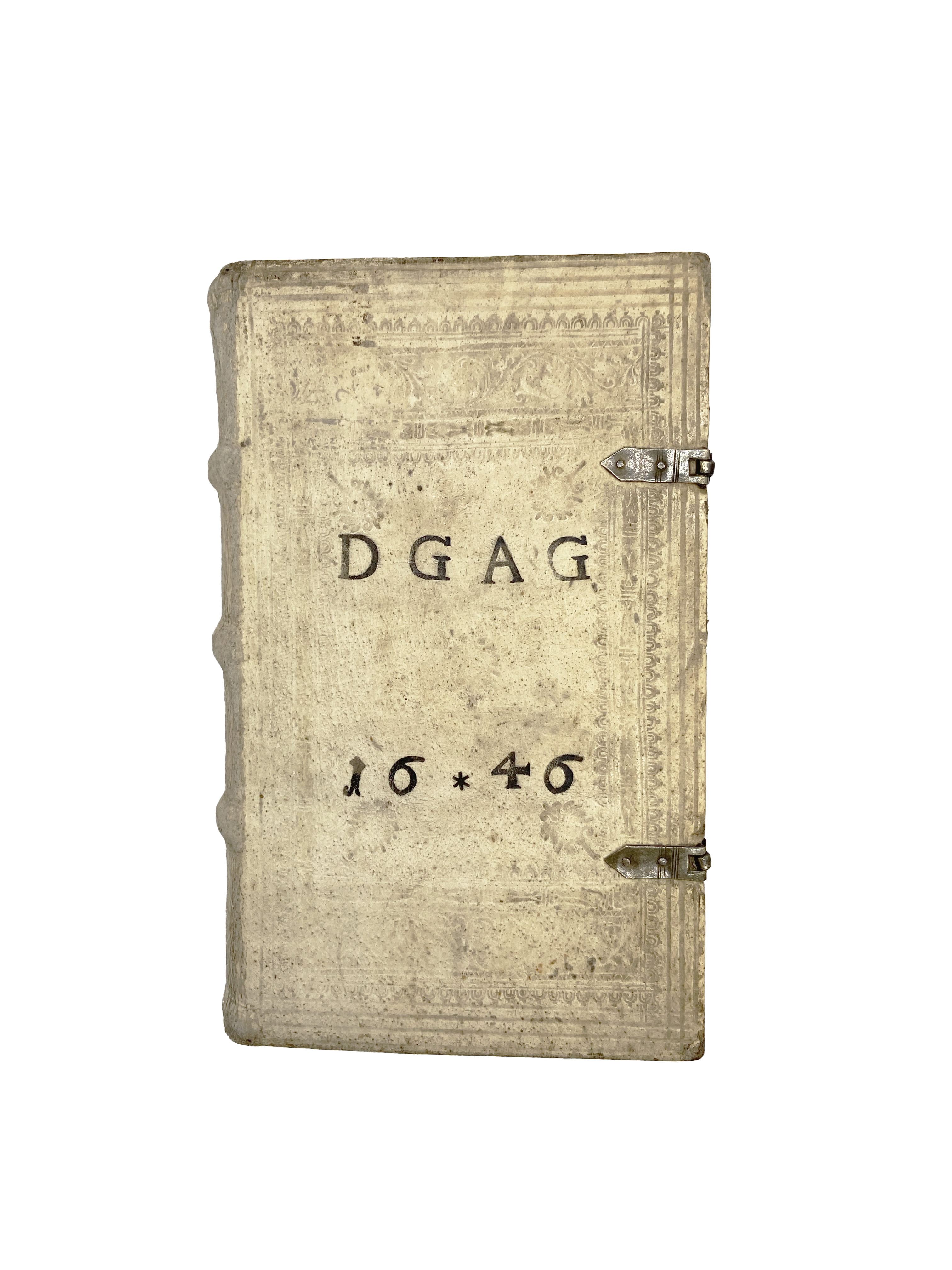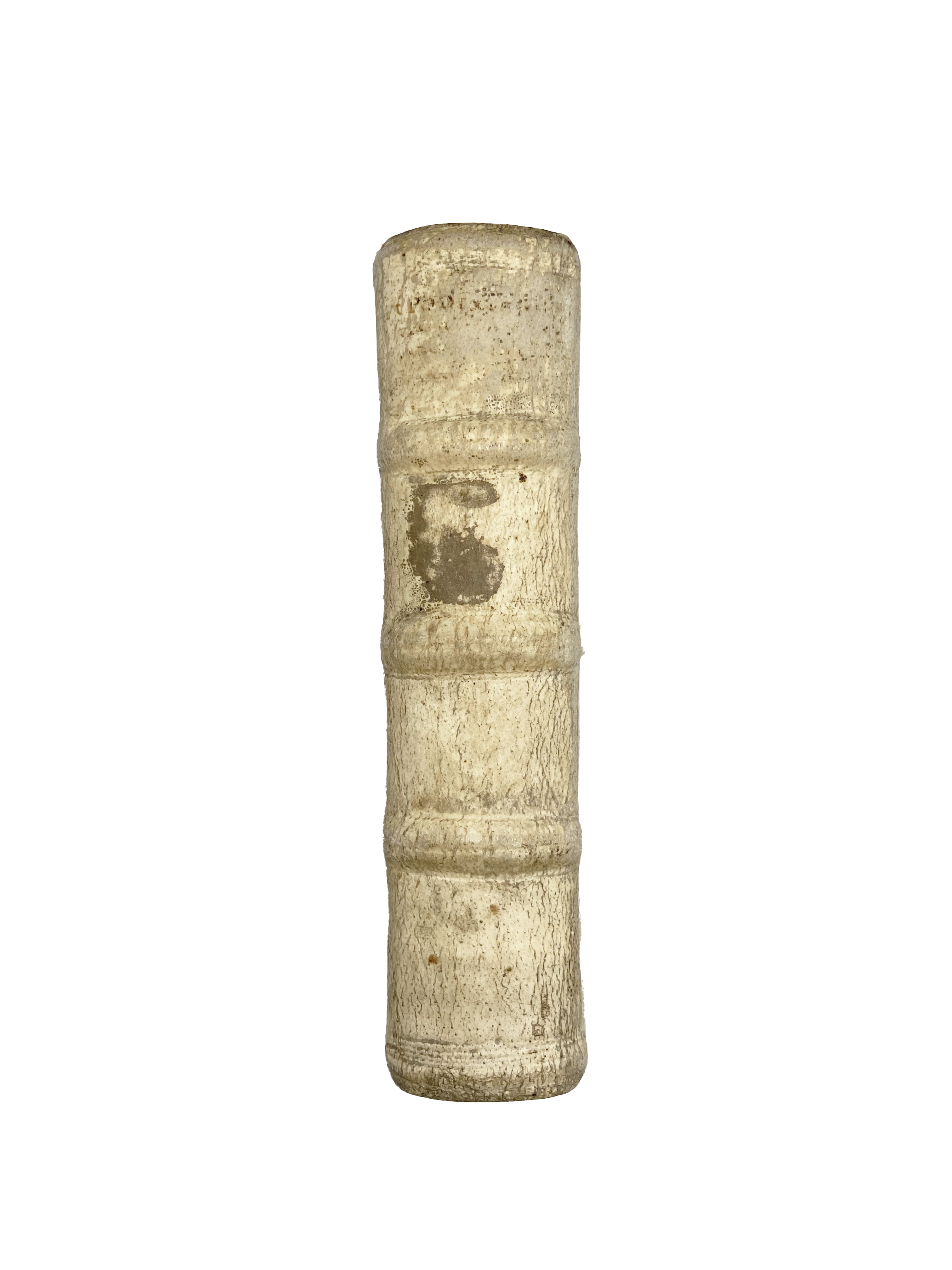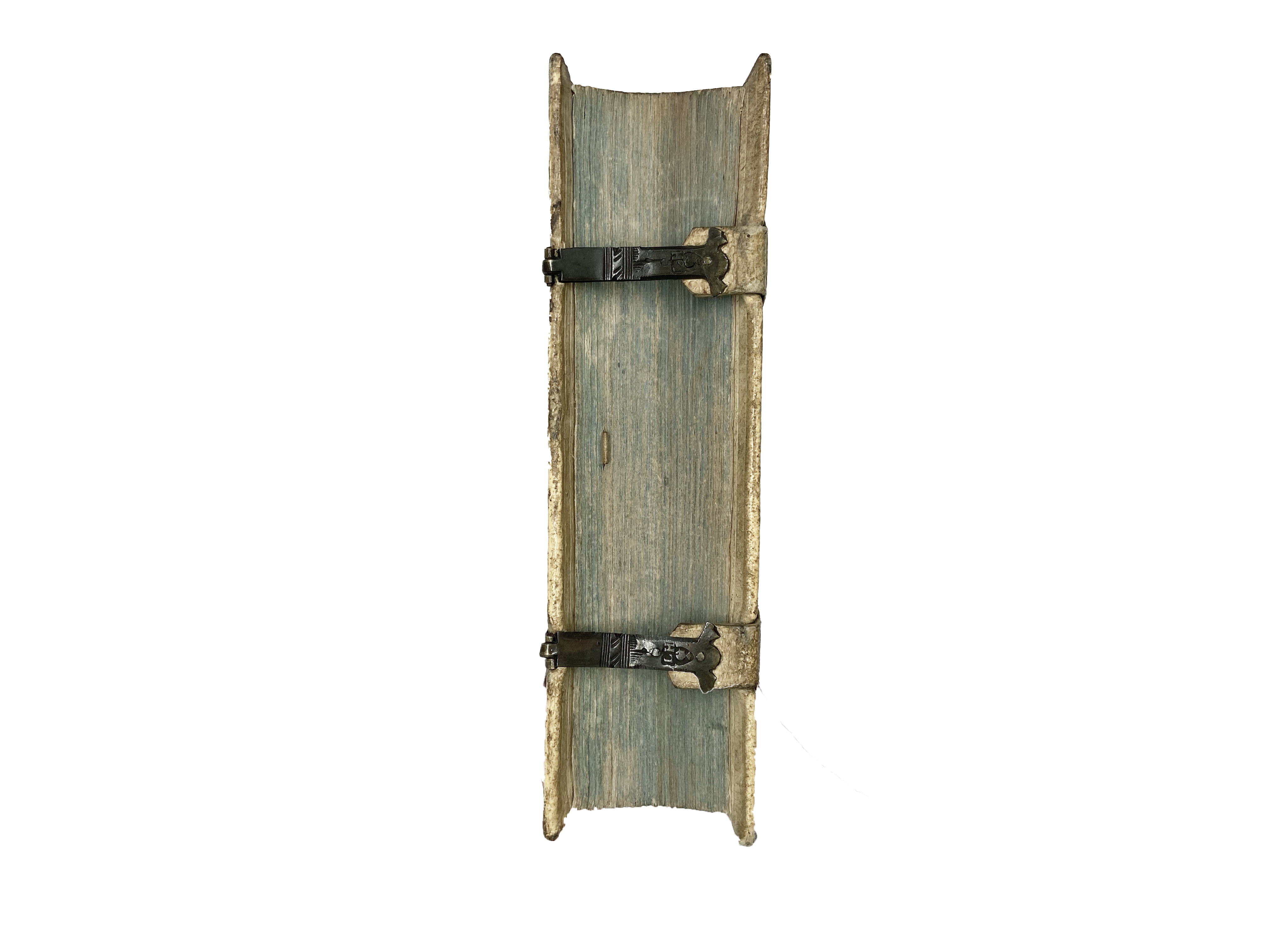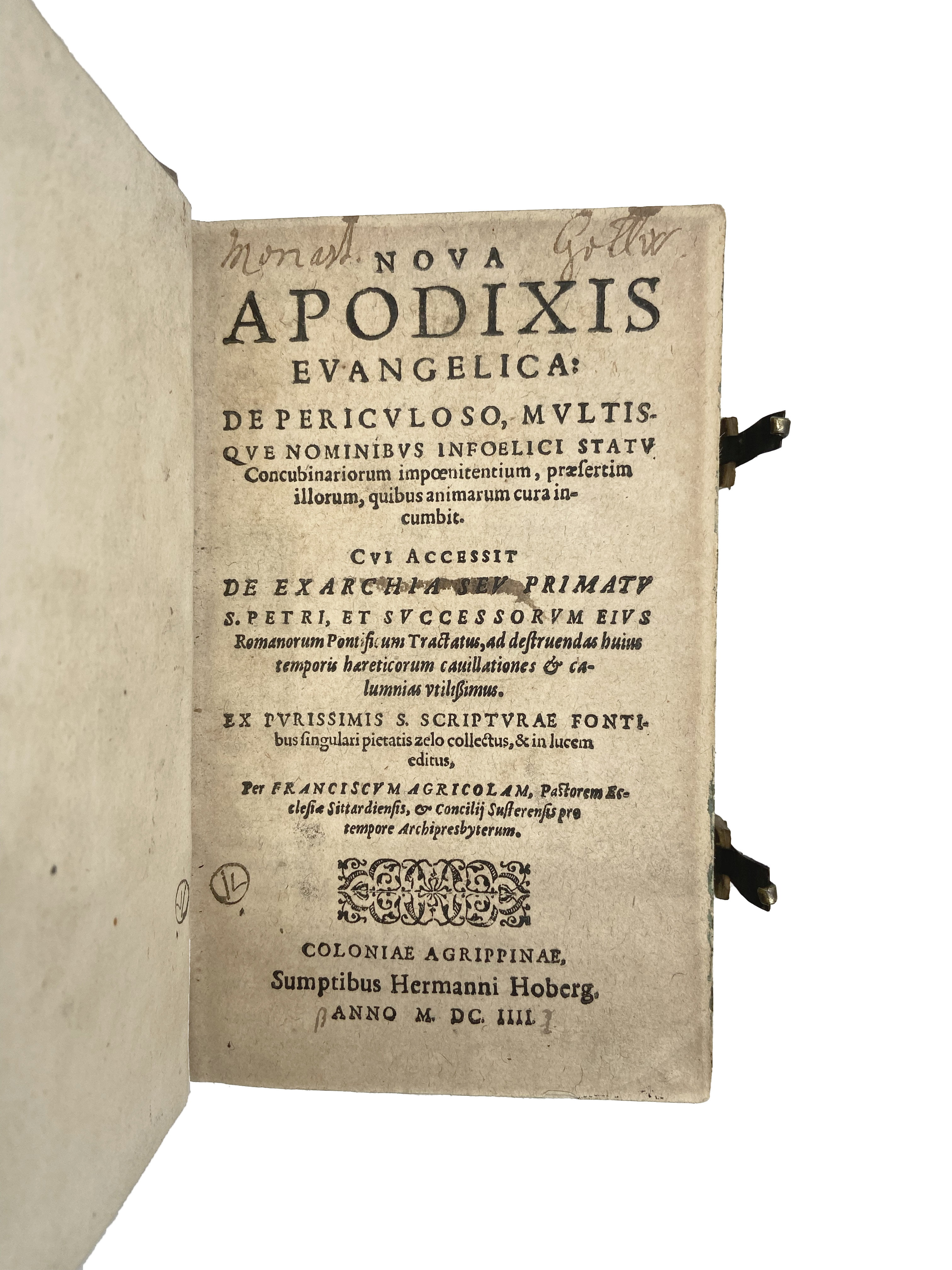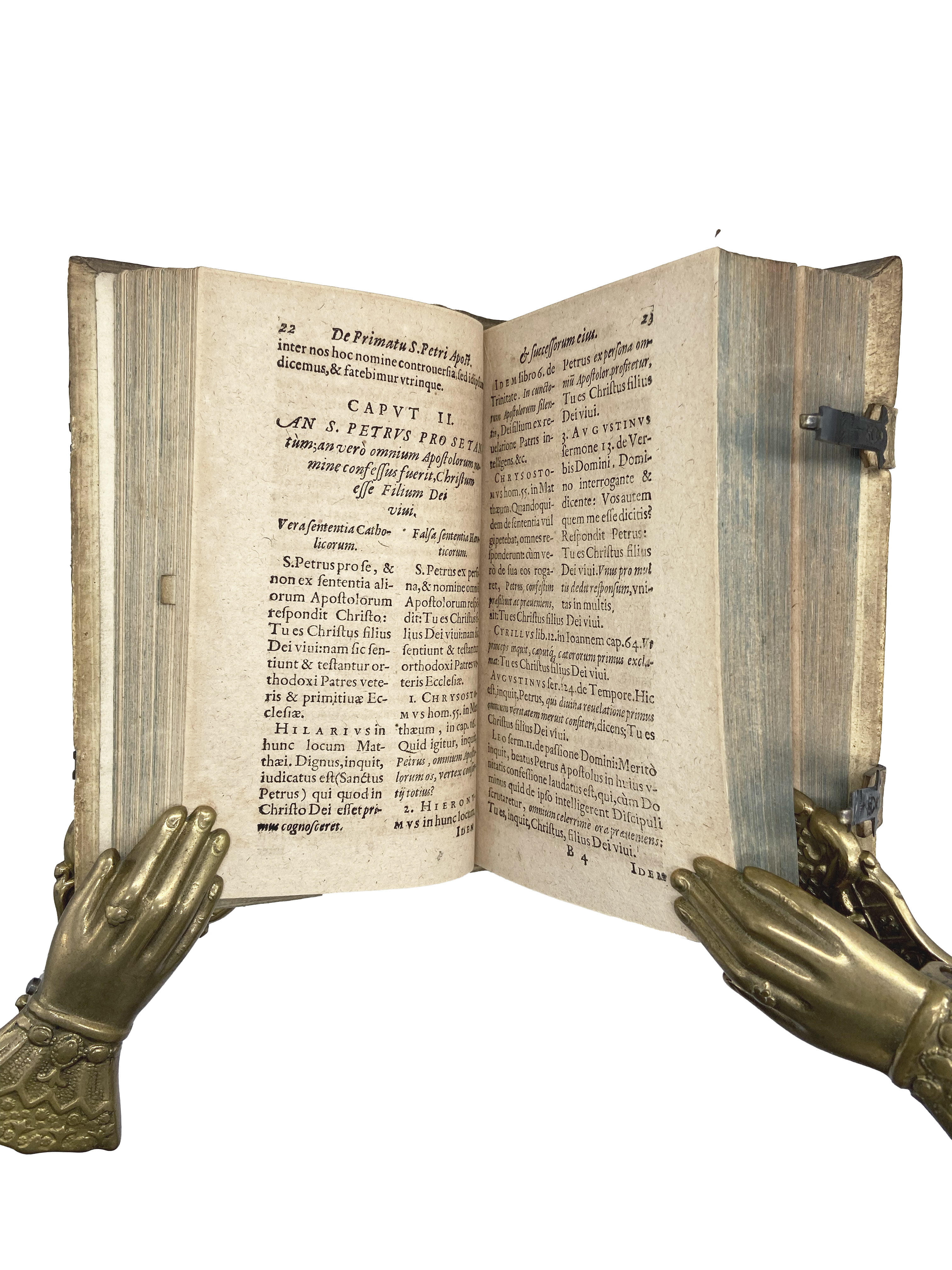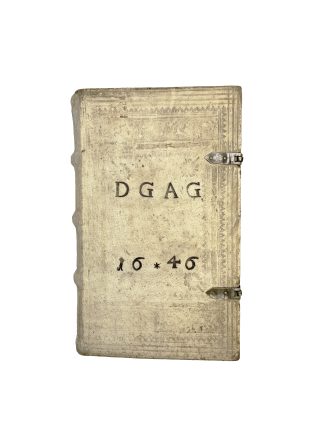AGRICOLA, Franciscus
CONCUBINAGE – UNRECORDED IN THE US
Nova Apodixis Evangelica: De periculoso […] statu concubinariorum impenitentium.
Cologne, Hermann Hoberg, 1604£1,650.00
FIRST AND ONLY EDITION. 8vo. 2 parts in 1, pp. 78 (x) [last two blanks]; 412 [i.e., 512] (vi). Roman letter, some Italic. Decorated initials and ornaments. Uniform light age browning as usual, small ink mark to t-p, old bookmark at fore-edge of last blank (part I). A very good, clean copy in near contemporary (probably Austrian) pigskin, two brass clasps, triple and double blind ruled to a panel design, outer border with blind roll of dentelles, second with blind floral decoration, central panel with blind-stamped fleurons to centre and corners, blind rolls of tendrils at head and foot, ‘DGAG 1646’ [David Gregor Abbas Gottwicencis] tooled in black to upper cover, raised bands, edge a little dusty. Pencilled casemark ‘XXXII K 77.2’ to front pastedown, C17 ms. ‘Monast Gottw’ and later ms. ‘IL’(?) in roundel to t-p.
This copy was in the library of David Gregor Corner (1585-1648), abbot of the Benedictine monastery of Göttweig, Lower Austria, in 1631-48. Educated in Breslau, Prague and Graz, he was a priest before entering Göttweig and becoming a major Counter-Reformation figure. For Austrian communities who had recently returned to Catholicism he published ‘Groß Catholisch Gesangbuch’ (1625), a hymn book which ‘brought together […] all the Catholic hymn books he could have access to at the time’ (Allg. Deut. Lex.).
A very good copy of this scarce and interesting work on clerical concubinage. Franciscus Agricola (1548-1624) was a Catholic priest at Rödingen and Sittard, Netherlands, and a prolific theological author—‘one of the most important controversists of the Reformation’ (‘Annalen’, 191). ‘Nova Apodixis’ (rhetorical demonstration) was a harsh critique of the dangerous status of clerical concubinage—i.e., the cohabitation of priests ‘more uxorio’, with ‘de facto’ wives and even children. This issue, which had plagued the Church since the middle ages and was berated by Reformers, was systematically addressed at the Council of Trent. Concubinage was henceforward considered a capital sin which, upon relapse, was punished by excommunication. It remained nevertheless widespread, and until the first quarter of the C17, works continued to be written on the subject. ‘[These] reflected the new, ideal model of sacerdotal life that had been […] enforced in the post-Tridentine Church, namely that which saw the role of the priest transform from a typically medieval “ministerial” figure—meaning someone who simply administered the sacraments—to that of a “shepherd of souls”’ (Salvi, 257). Agricola’s first section sets the tone by presenting concubinage as a mortal sin which, for ecclesiastical clerics, is worse than for secular ones or laymen. In particular, clerics guilty of the sin of ‘luxuria’ and the ‘sacrilege of libido’ who administer communion and all other sacraments, are ‘worse than the traitor Judas’ and ‘almost crucify Christ again’. With particular attention to relapsing clerics (‘impaenitentes’), the following sections seek to demonstrate how they are, among others, ‘sons’ and ‘servants’ of the devil, ‘dogs’, ‘thieves of souls’, ‘idolaters’, ‘worse than adulterers’, ‘heretics’, ‘haters of God’ and ‘worse than infidels’. The second part—‘De exarchia seu primatu S. Petri, et successorum eius’—supports the Counter-Reformation tenet of the pope’s authority over the Church. Each section begins with quotations from authorities (scriptural or theological) supporting the Catholic or Reformed stance on St Peter’s pre-eminence over the other apostles, and proceeds to analyse these statements at length.
No copies recorded in the US. USTC 2141167. Not in BL STC Ger. C17 or Graesse. Annalen des Historischen Vereins…, 46 (1887); S. Salvi, ‘Clericus Recidivans’, Vergentis 5 (2017), 241-60.In stock


